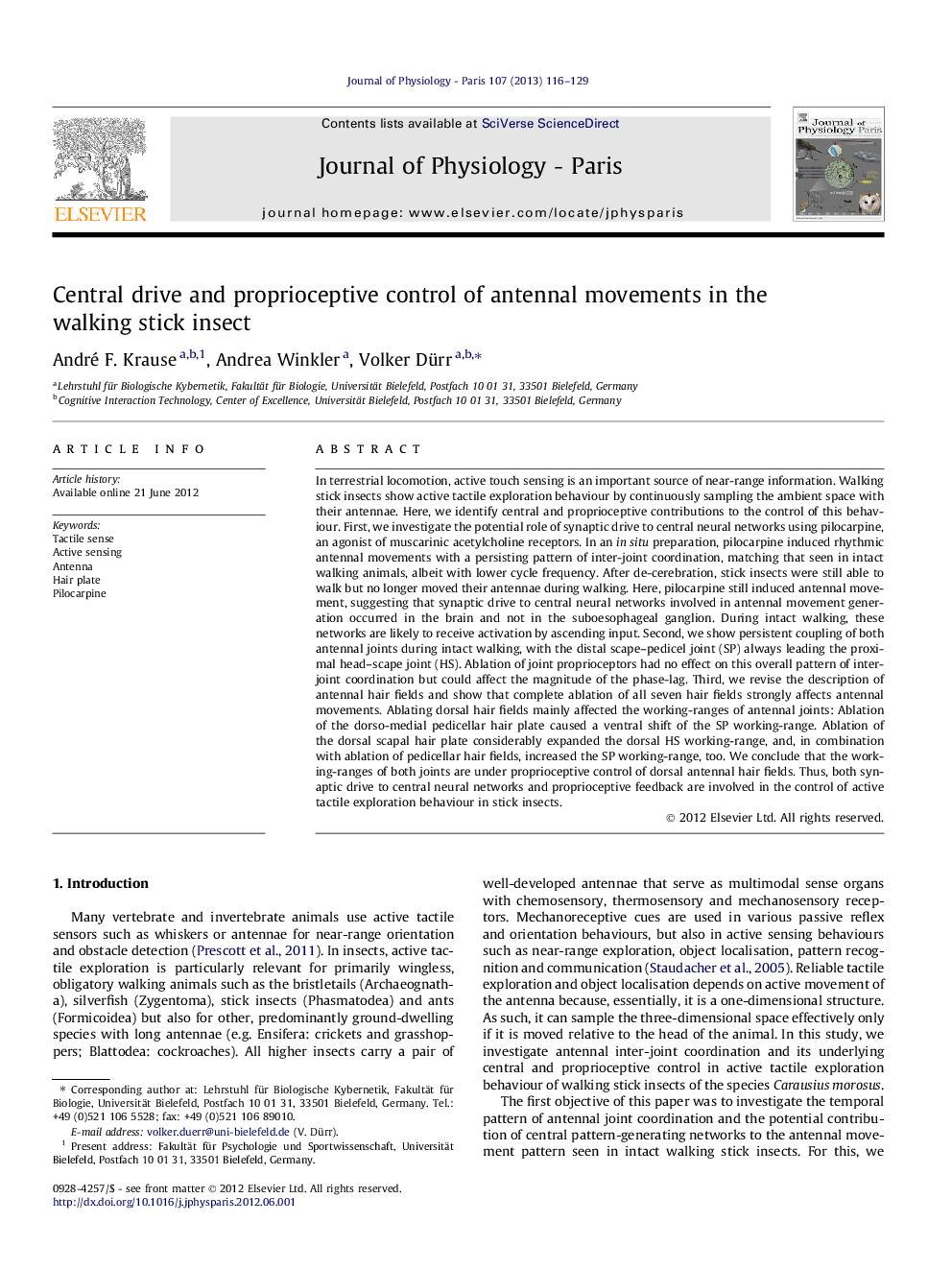| Article ID | Journal | Published Year | Pages | File Type |
|---|---|---|---|---|
| 2842199 | Journal of Physiology-Paris | 2013 | 14 Pages |
In terrestrial locomotion, active touch sensing is an important source of near-range information. Walking stick insects show active tactile exploration behaviour by continuously sampling the ambient space with their antennae. Here, we identify central and proprioceptive contributions to the control of this behaviour. First, we investigate the potential role of synaptic drive to central neural networks using pilocarpine, an agonist of muscarinic acetylcholine receptors. In an in situ preparation, pilocarpine induced rhythmic antennal movements with a persisting pattern of inter-joint coordination, matching that seen in intact walking animals, albeit with lower cycle frequency. After de-cerebration, stick insects were still able to walk but no longer moved their antennae during walking. Here, pilocarpine still induced antennal movement, suggesting that synaptic drive to central neural networks involved in antennal movement generation occurred in the brain and not in the suboesophageal ganglion. During intact walking, these networks are likely to receive activation by ascending input. Second, we show persistent coupling of both antennal joints during intact walking, with the distal scape–pedicel joint (SP) always leading the proximal head–scape joint (HS). Ablation of joint proprioceptors had no effect on this overall pattern of inter-joint coordination but could affect the magnitude of the phase-lag. Third, we revise the description of antennal hair fields and show that complete ablation of all seven hair fields strongly affects antennal movements. Ablating dorsal hair fields mainly affected the working-ranges of antennal joints: Ablation of the dorso-medial pedicellar hair plate caused a ventral shift of the SP working-range. Ablation of the dorsal scapal hair plate considerably expanded the dorsal HS working-range, and, in combination with ablation of pedicellar hair fields, increased the SP working-range, too. We conclude that the working-ranges of both joints are under proprioceptive control of dorsal antennal hair fields. Thus, both synaptic drive to central neural networks and proprioceptive feedback are involved in the control of active tactile exploration behaviour in stick insects.
► The muscarinic agonist pilocarpine induces rhythmic tactile exploration movements. ► These tactile exploration movements are persistently coordinated. ► Coordination is similar in induced and spontaneous activity, but frequency differs. ► Ablation of joint angle proprioceptors strongly affects antennal movement. ► Ablations of single hair fields cause distinct effects, e.g., on working-range.
